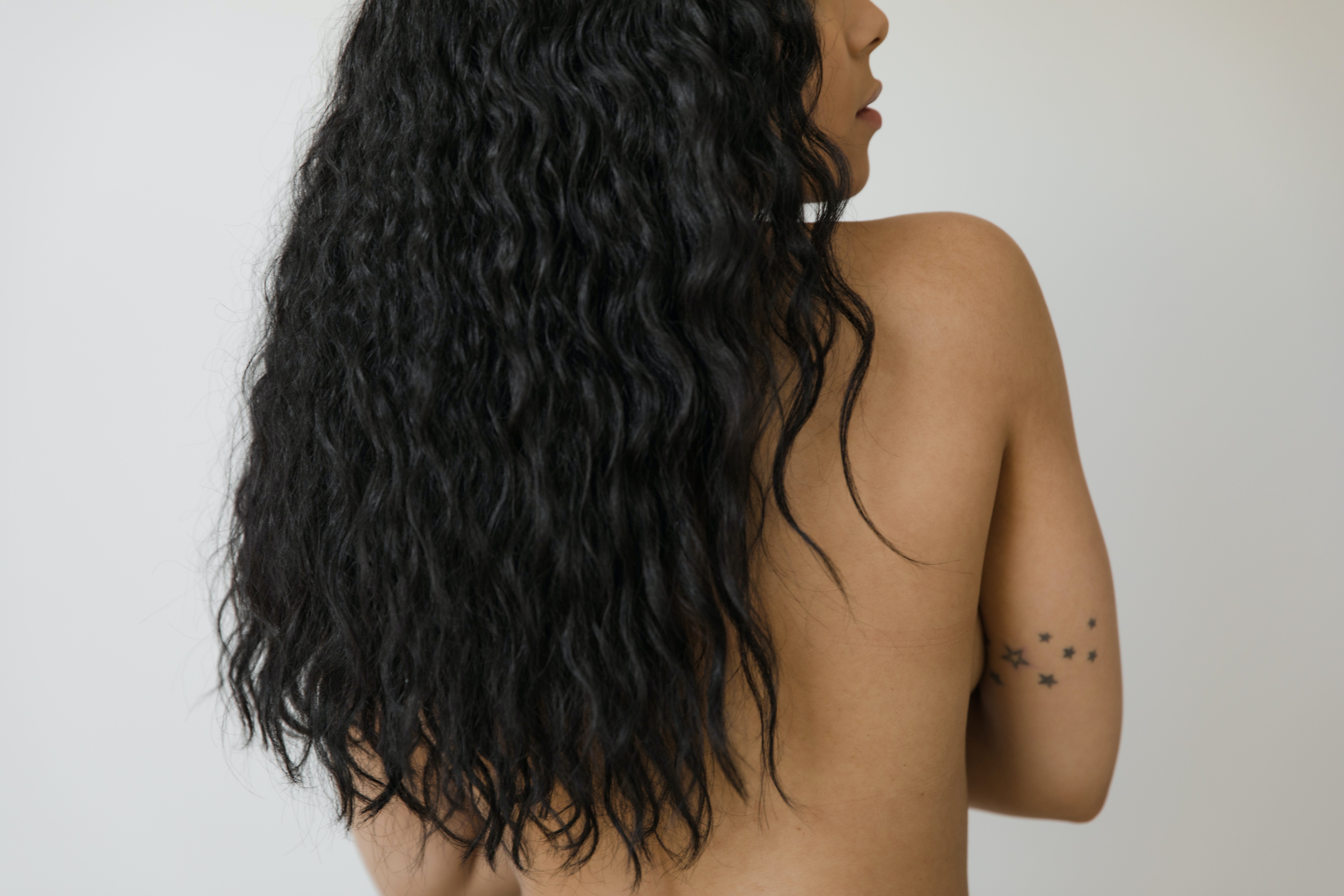Hair porosity: how to identify it and adapt your hair routine
Whether your hair is fine, thick, wavy, or curly, they all have one thing in common: porosity. Whether related to internal or external factors, porosity is a hair characteristic that can be the cause of many hair problems. Fortunately, there are solutions to identify it and adapt it to your hair routine.

What is porous hair?
The definition of porosity
Porosity is the ability of hair to absorb and retain moisture. This porosity is due to poor health of the cuticle, in other words, the scales that surround the hair. The more these scales are open, the more the hair is porous, on the contrary if they are closed then the hair will be of low porosity, which can also cause many concerns. There are three levels of porosity: low, normal and high, to take care of your porous hair, you must use specific products adapted to your hair type.
How to tell if hair is porous
How to know its porosity?
The porosity test is a test that determines the level of hair porosity. There are several methods to test the porosity of your hair. The most common method is to dip a section of hair into a container of water. If the hair flows, it is very porous, if it floats then the porosity is low, if the hair does not float and does not flow then the porosity is medium!

The different types of porosities
Low Hair Porosity: Causes and Solutions
Low hair porosity is a hair problem that is characterized by a lack of volume and texture. Low porosity hair is often fine, flat and not very elastic. They tend to break easily because they don't absorb enough and end up dehydrated. This low porosity is caused by cuticles that are too tight and do not allow skincare to penetrate. Fortunately, there are solutions to take care of low porosity hair:
To do this, you have to try to open the scales so that the treatments act in depth! To do this, we opt for ultra-light and moisturizing treatments so that they penetrate the hair fiber more easily, such as the Cut By Fred vegan hydration mask hair care , which nourishes the hair without weighing it down. Composed of aloe vera or very light vegetable oils, it makes the hair supple and shiny. To help the absorption of the treatment, opt for heat by wrapping a damp, warm towel around your hair while the mask is on.
For the care to penetrate better, you can also use a hair scrub such as the Cut By Fred depolluting salt scrub or Shaeri Paris detoxifying scalp scrub Pure Scrub whowill unclog the hair of all the substances that could clog the hair fiber.
We forget the industrial shampoos composed of sulphate and silicone which will envelop the hair and suffocate it, not allowing the care to act in depth and we turn to a natural shampoo with moisturizing properties such as the mild solid shampoo Umaior the Desert Essence Fragrance Free Gentle Shampoowho wash hair gently while providing shine and lightness.

Hair with normal porosity
Hair with normal porosity is strong, supple and shiny. They have an intact cuticle and a healthy hair fiber. Normal to medium porosity hair is also the easiest to style and detangle. They absorb care and are not particularly affected by dehydration.
High porosity hair
When the hair is very porous, the cuticles that surround the hair, otherwise called the scales, are more open, so they absorb hydration more easily but do not retain water within the hair fiber. High porosity hair tends to be dry, brittle and have split ends. They need specific care to be deeply nourished and regain their suppleness and radiance. They are particularly sensitive to external factors such as the sun, pollution or even certain products that are too aggressive.
Care for high porosity hair
Porous hair needs specific products to be nourished and protected. It is therefore important to choose care adapted to your hair type. The best treatments for porous hair are masks and nourishing oils that will seal in moisture. Unlike low porous hair, avoid heat and favor drying in the open air.
For hair with high porosity, opt for an ultra-nourishing shampoo formulated with oils that will help maintain hydration within the hair fiber and prevent dehydration, such as Josh Rosebrook nourish dry hair shampoo
We choose a treatment with a thick and rich material, such as a cream or a butter like the repairing hair mask feed MADARA which strengthens, protects and nourishes the hair in depth.
Finally, we use a rich hair oil that will allow the scales to tighten, such as HEVEA intense nutrition oil for dry hair.

Porosity in curly to frizzy hair
Porosity is a common problem with curly to frizzy hair, it tends to be more porous than straight hair. This is due to their unique hair structure, which is made up of three layers: the cuticle, the cortex and the keratin. This is why curly to frizzy hair tends to be drier and more fragile than other hair types.

Our other articles to consult:
Natural transition: how long does it take?
The ranking of the 10 best natural and organic shampoos
Is it serious to have dandruff?
How long does post pregnancy hair loss last?
My organic hair routine for frizzy and curly hair
How do I define my wavy hair?
Natural products to thicken fine hair
5 tips to restore shine to tired hair
Comments

